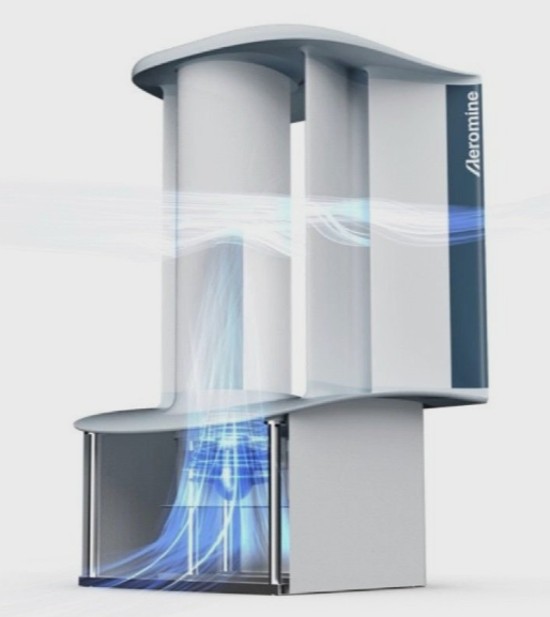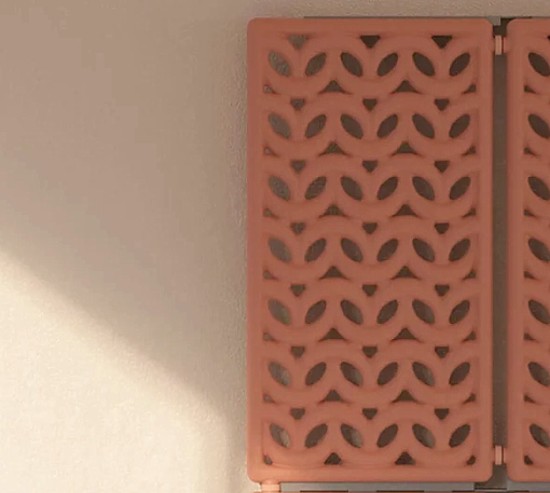In my search for novel improvements in sustainable renewable energy and in passive cooling and heating systems, I recently came across two technologies, one an innovative alternative to the wind turbines we have become familiar with these days, and the second a traditional Bronze Age technology that can be used today to keep homes and buildings cool on hot days.
A Novel Wind Turbine
We are increasingly familiar with wind turbines. These immense structures usually found in groups are the windmills of Don Quixote’s worst nightmares. Standing hundreds of metres tall they can dominate a landscape.
But what if we could design a wind turbine with a much smaller form factor (check out the illustration below and an installation illustrated at the top of this article) that could perform more efficiently and that didn’t disrupt a skyline? That’s what Aeromine Technologies has developed.
The company states that its wind turbine provides 50% more power than solar panels at the same or lower cost. Each wind turbine is small. The moving parts are inside it, unlike conventional wind turbines. The size allows for several to be installed on building rooftops as seen at the top of this article. They can be combined with solar panels. An Aeromine is designed to handle a wide range of weather conditions from little to gale force winds where larger wind turbine technologies would have difficulty operating.

Aeromine is ideal for large commercial buildings with flat roofs. That can include a wide range of structures from multi-unit residential buildings to warehouses, manufacturing facilities, and office buildings. In combination with solar, the two can meet 100% of a facility’s energy needs. It can be part of an off-the-grid solution.
A single Aeromine wind turbine produces the same amount of energy as 16 solar panels. They are easy to install and can operate even in light wind conditions. There are no external rotating blades with each unit producing 5 Kilowatt hours of electricity on average.
Reviving A Bronze Age Technology To Cool Homes
The Bronze Age approximates the period between 3300 and 1200 BCE. It was a period of incredible invention from the smelting and combining of tin and copper to make bronze, as well as the development of alphabets and writing, to the first significant-sized urban-centred civilizations.
It also was a period in time in the Middle East when terracotta clay containers containing water were used in homes as a source of cool drinking water. At the Holon Institute of Technology, in Israel’s Negev, Yael Issacharov has taken cool water systems found in Palestinian homes called jarrah (which means clay pot in the local Arabic dialect) and turned it into a room cooling solution.
She calls her invention the NAVE. It uses water-filled hollowed terracotta tiles that can be configured for almost any home space. States Issacharov, “since it is a site-specific system, the quantity and size of tiles…depend on the location and size of the space.” She sees it as a perfect solution for arid climates around the world whether the U.S. Southwest or the Sahara Desert.
The NAVE, as seen in the picture below, can be designed as individual wall tiles which can be grouped together to cover a large space, or configured as a terracotta screen or standalone totem pole.

How does it work? The tiny pores in the clay allow the warm water inside to filter through evaporating in contact with the room air. The evaporation cools the water in the NAVE in the same sweating on a hot day cools down our bodies. That in turn lets the NAVE cool the room.
Because each installation and design is customized, a NAVE cooling solution is more expensive initially than conventional air conditioners. But the energy savings once implemented in a home quickly offset the initial outlay. At the same time, the beauty of the design more than compensates, combining both art and artifice.
Issacharov recently received the Gold Medal in Sustainable Living for this novel air conditioner with roots in the Bronze Age at this year’s IDA Design Awards.









